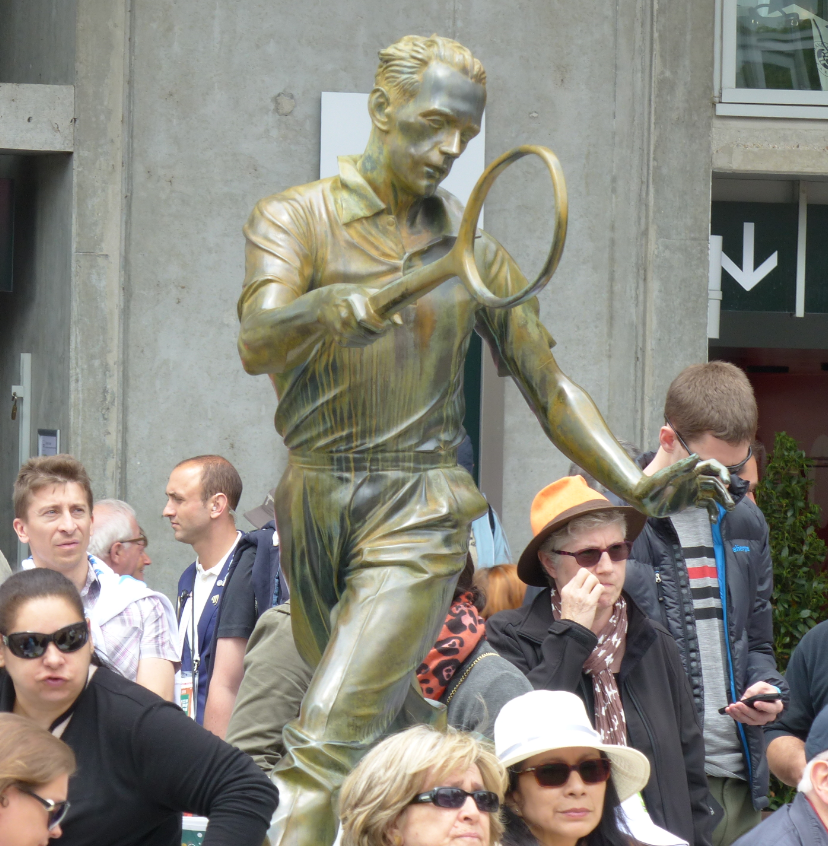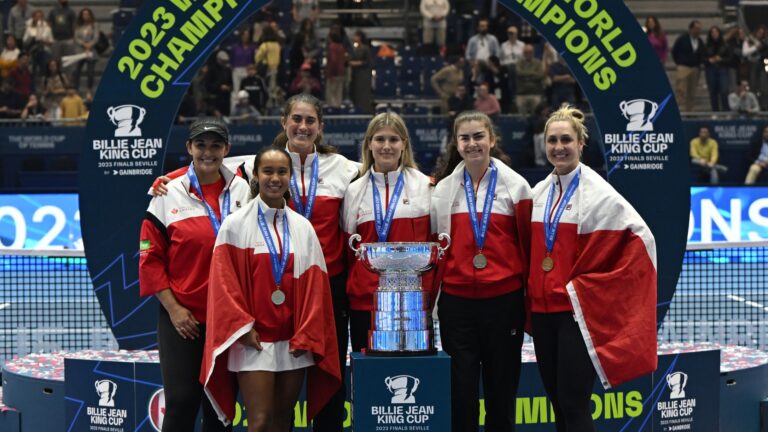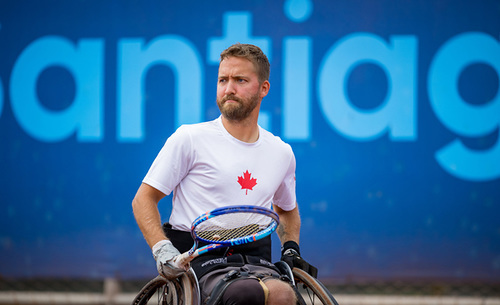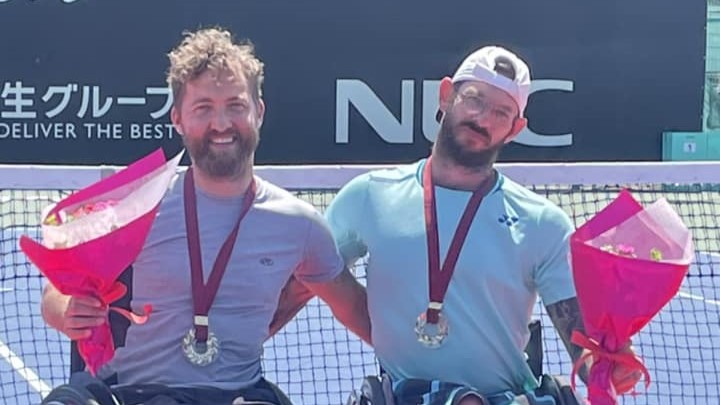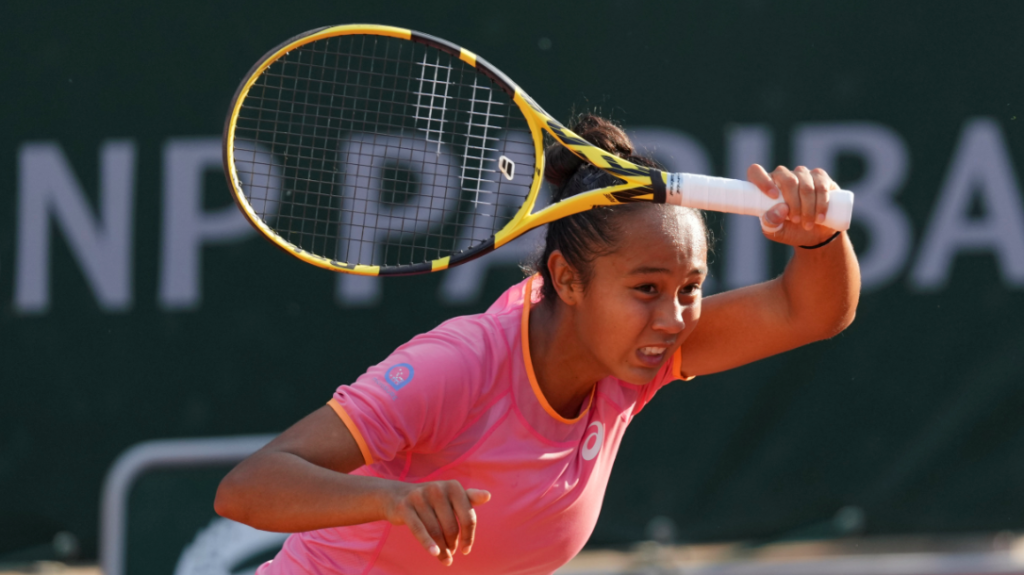
Photo: Martin Sidorjak
Leylah Fernandez made quick work of Anastasia Potapova on Sunday, advancing to the second round of Roland Garros with a comprehensive 6-2, 6-1 victory over the No. 78-ranked Russian.
After losing the opening game on the Potapova serve, Fernandez was in total control – winning 12 of the next 14 games and not facing a single break point.
Playing in her second French Open after reaching the third round last October at the unique autumn edition of Roland Garros, Fernandez was deadly efficient – finishing with 17 winners and just six unforced errors.
The 20-year-old Potapova was a pouty picture much of the match – frequently looking in frustration at her courtside supporters. She wound up with 16 winners and 20 unforced errors. At 5-foot-7, she has an effective serve but won only 59 per cent of first serve points and 27 of second serve points while managing to somehow get called for four foot faults.
Fernandez appears to have a found a solid level at the right time after going 2-3 at European clay-court events in Madrid, Rome and Belgrade heading into Roland Garros. She was sharp from the get-go against Potapova, with her signature focus never wavering as she finished off a one-way traffic affair in around 59 minutes.
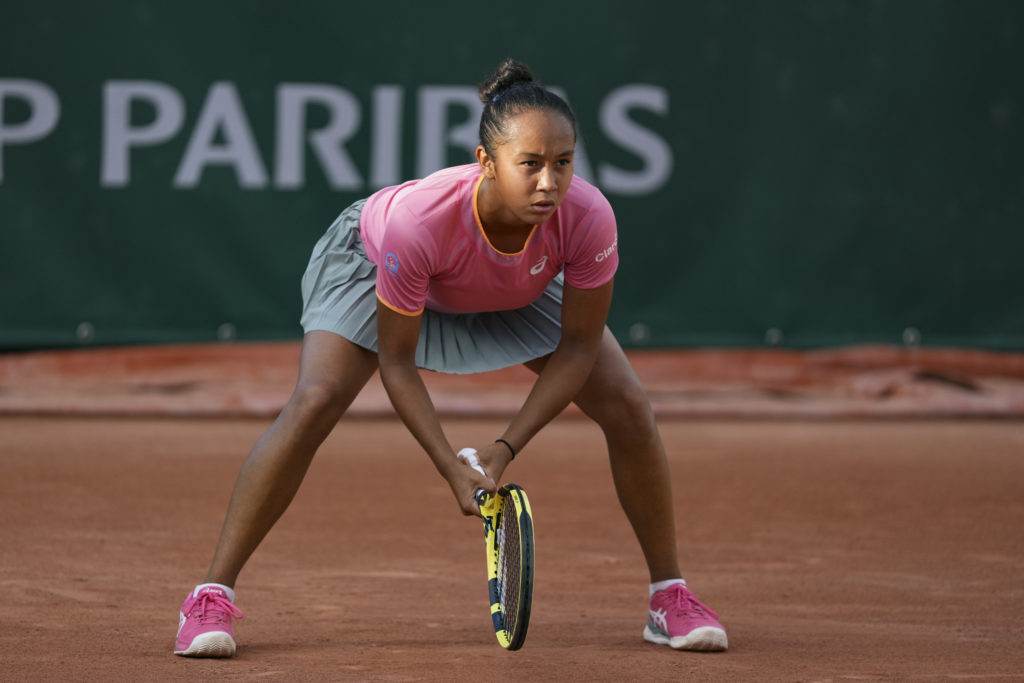
Her record now at Roland Garros, where she was the junior girls champion in 2019, is now 3-1 after winning two rounds and then losing 7-5, 6-3 to No. 11-ranked Petra Kvitova in the third round in 2020. Memorably, she led the first set 5-1 against the two-time Wimbledon champion.
In Wednesday’s second round, Fernandez will have a first-time meeting with either 23rd seed Madison Keys of the U.S. or French wild card No. 115 Océane Dodin.
With the victory on Court 8, the 18-year-old Fernandez’s current career-best ranking will move up one spot to No. 68.
During pandemic times when prize money is sometimes being reduced and the status of several tournaments is unsure, Fernandez will be happy to have earned 84,000 euros or $123,666 (CAN) for making it to the second round.
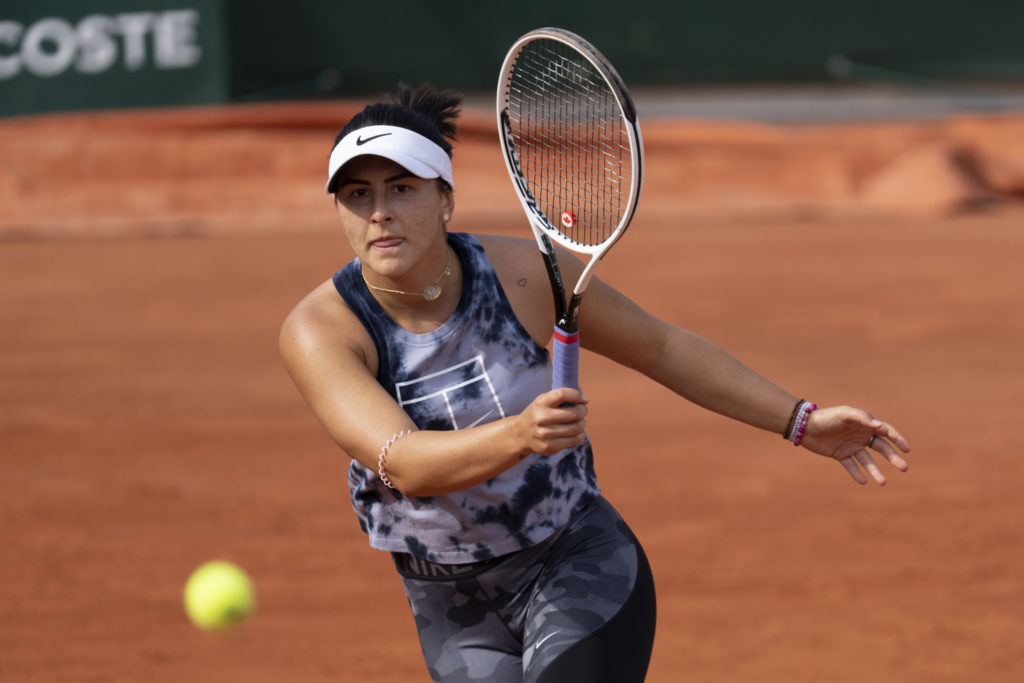
When Bianca Andreescu faces No. 85-ranked Tamara Zidansek of Slovenia in the first round on Monday, it will be just her fourth match on clay since losing in the final round of 2018 Roland Garros qualifying 6-3, 7-6(9) to No. 133 Richel Hogenkamp of the Netherlands when she was just 17.
Her only matches on the terre battue since then have been a gutsy 5-7, 6-4, 6-4 victory over No. 118 Marie Bouzkova in the opening round of Roland Garros in 2019, her last match for three months (before her triumph at the 2019 National Bank Open in Toronto) because of a shoulder ailment. Then there were last week’s two wins over qualifiers at the WTA 250 event in Strasbourg before she withdrew with concern for what she called “a bit of an ab (abdominal) tear.”
Andreescu has shown a remarkable capacity, over-and-over again, to return from injury breaks and play at a high level. She will have to hope that can be the case again at this year’s French Open, and her draw could help because it’s reasonably favourable. If she gets past Zidansek, it would then be either No. 85-ranked American veteran Madison Brengle or qualifier No. 98 Maria Camila Osorio Serrano of Colombia in the second round followed by a possible third-round match-up against No. 29 seed Veronika Kudermetova or No. 68-ranked Katerina Siniakova. Even in the round-of-16, the seeds are No. 19 Johanna Konta and No. 10 Belinda Bencic, both opponents who would not be overly intimidating for her.
But foremost, staying healthy will likely determine how things play out. Much of that will be in the hands of her fitness trainer Abdul Sillah, a highly-qualified and respected American professional who has worked with Serena Williams, Sloane Stephens and Naomi Osaka.
The Andreescu – Zidansek encounter on Monday is scheduled for second on Court 14 after the men’s match between Sam Querrey and 31st seed John Isner that starts at 11 am (5 am ET Canada).
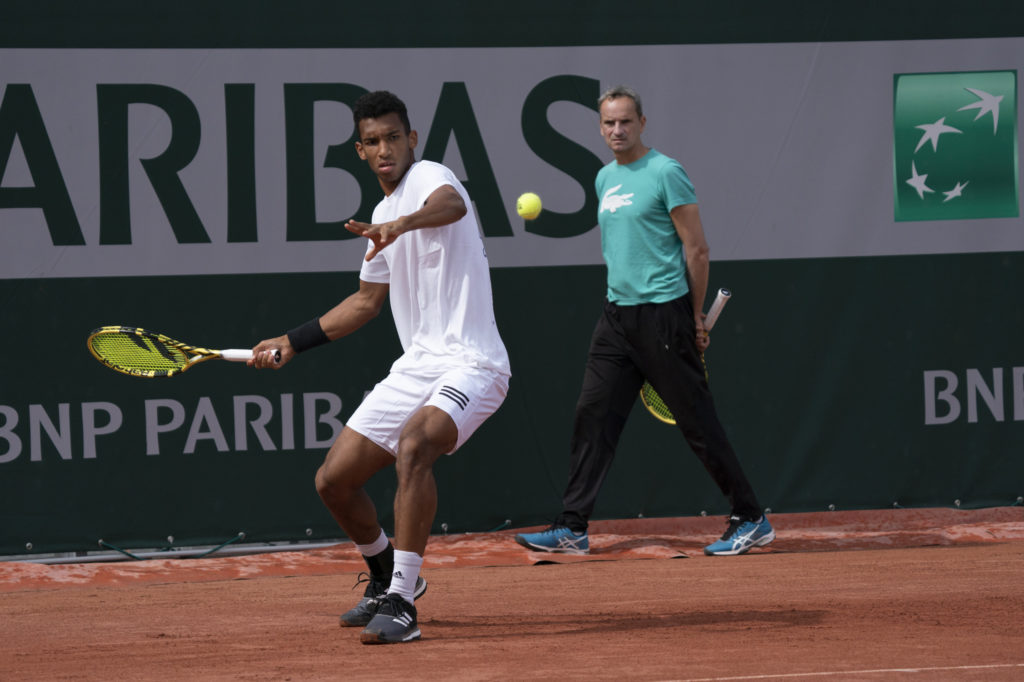
Now that No. 17 seed Milos Raonic has withdrawn with a calf injury, the only other Canadian in the men’s draw is No. 20 seed Félix Auger-Aliassime. He plays his first round on Tuesday against No. 98-ranked Andreas Seppi, 37, of Italy. It will be their first meeting.
THE GLORIFICATION OF RAFA

In the long history of the sport has a player statue ever been erected at a tennis grounds before his or her career was finished?
The statue – actually more accurately a sculpture – of 13-time French Open champion Rafael Nadal that was unveiled on Thursday at Roland Garros seems a little premature. It might even turn out to be a life-like ghost haunting him over the next two weeks as he attempts to win a 14th title in 17 tries on the terre battue in Paris.
He would probably have been better served and able to take everything in and properly appreciate the honour if it had delayed a few years until he retires. At that point he would more prepared to put in perspective all that he had accomplished during his career.
The creation by Nadal’s Spanish compatriot Jordi Diez Fernandez is a modern interpretation of ‘Rafa,’ and an interesting contrast with the more traditional bronze statues of France’s Four Musketeers from the 1920s and 1930s – below is one of them, Henri Cochet.
